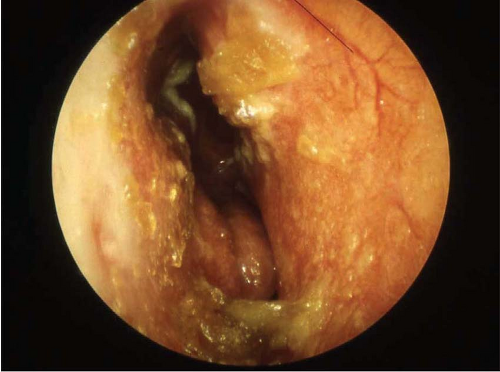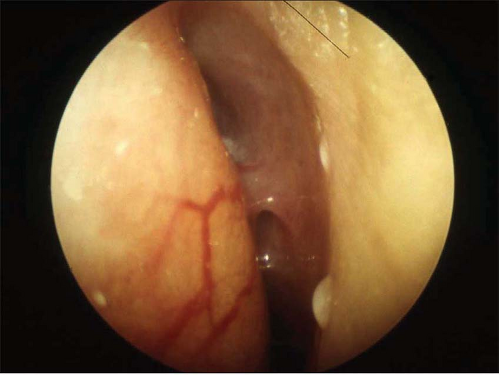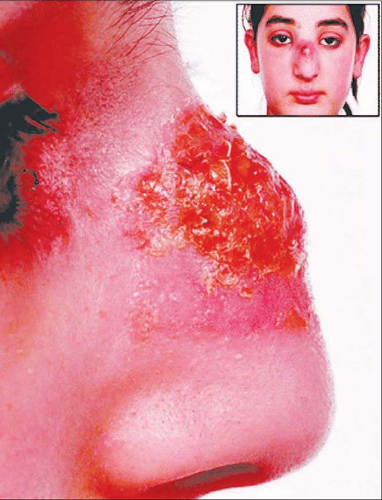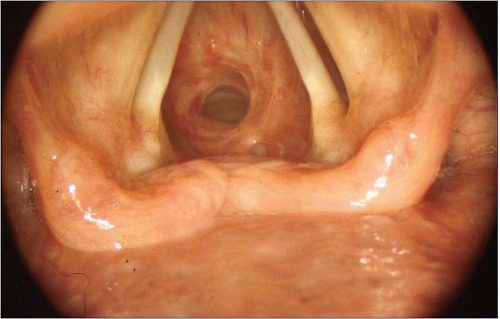Tropical ENT Infections
Surianarayanan Gopalakrishnan
Vinidh Paleri
Common infections
Several tropical infections can cause ENT manifestations and some of the common ones are discussed below.
RHINOSCLEROMA
Rhinoscleroma is a rare infectious disease of the upper respiratory tract caused by Klebsiella rhinoscleromatis. There are five endemic regions including Eastern Europe, South America, Africa, India, and Indonesia. The infection usually starts in the nasal mucosa as transmission is thought to be by airborne droplet spread. The disease can be subdivided into three different stages. The first stage is associated with rhinorrhoea and crusting in the nasal cavity lasting months (11.1). The second stage is characterized by nodular granulomatous masses appearing within the nasal cavity, and these may extend to sinuses, nasopharynx, oropharynx, larynx, and tracheobronchial tree. The third sclerotic stage is characterized by healing that occurs with extensive scarring and adhesions around the nose, palate, and larynx (11.2). Subglottic stenosis can occur as a lifethreatening late manifestation requiring immediate surgical intervention (11.3). The diagnosis has to be confirmed with biopsy and histopathological examination. Medical treatment primarily consists of a long-term course of antibiotics. Tetracycline and ciprofloxacin have proved to be the most effective drugs.
 11.1 Crusts seen in the right nasal cavity in early rhinoscleroma. (Courtesy of Dr. Andreas Leunig, Munchen, Germany.) |
 11.2 Synechiae in the right nasal cavity in late rhinoscleroma. (Courtesy of Dr. Andreas Leunig, Munchen, Germany.) |
 11.4 Cutaneous leishmaniasis on the nasal dorsum. (Reproduced with permission from BMJ, 2007;335:354, Ariff MH.)
Stay updated, free articles. Join our Telegram channel
Full access? Get Clinical Tree
 Get Clinical Tree app for offline access
Get Clinical Tree app for offline access

|
